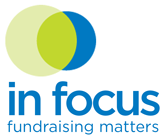Recent Posts
- The Secret Sauce: Strategies & Tactics to Engage Institutional Funders
- What Are Your Donors Saying When They Go Quiet? And How Should You Respond?
- Maximizing Year-End Giving: Strategies for a Successful Fundraising Campaign
- Navigating 2024’s Unique Year-End Fundraising Landscape
- Latest Giving USA Data
- How to Flex Your Case for Support to Raise More Money
- Maximizing Potential of Donor-Advised Funds: Strategies You Need To Know
- Major Donors: Cultivating Relationships & Forging Strong Ties
Connecting & Building Relationships with Institutions
September 26th, 2023
Raising Funds From Institutional Donors
Recently, a colleague who just started in a senior-level fundraising position described a work challenge she’s having. She told me that her organization’s leadership shared an expectation that she should be bringing in new major gifts from corporations and foundations ASAP. It’s been just three months since she joined as the group’s first VP of development, and she is their only full-time fundraiser.
She asked if I could share some info that she could forward about how long it can take to raise funds from institutional donors. As I put together some notes for her, I realized this could be helpful to others, so I’m sharing here my experience and our team’s input on what has worked and what to expect when reaching out to new funders to solicit institutional gifts.
Of course, reaching out to “warm” leads -- funders whom you’ve met, you’ve been introduced to, or someone in your organization is connected to -- is always preferable to “cold” outreach. However, as a fundraiser, reaching out to make new connections is part of our job. While it may not be your favorite part, it can lead to new relationships and help your nonprofit forge partnerships. So, here are some tips to help you with outreach, or to help you explain to those in your organization what it takes to do this work:
First Impressions Matter.
We love building prospect lists. So much potential! Often our clients see a robust list of funders, with sample grants and information on what projects were funded, and assume it should be a pretty quick jump to go from on-the-list to get-a-grant for the work they’re doing.
However the majority of corporations and foundations do not accept unsolicited grants, so if you don't have a contact, you’ve got to start with an inquiry email to the right program officer to find out if they’d be willing to have a conversation or learn more about your work. For this, you can send a short, compelling email detailing who you are and why you’d like to connect. A few days later (1 week max), call the recipient and leave a message where you reference your email and say you’d love to find a time to discuss your work and possible alignment. A few days after that, send another email, referencing your call and send a link or other brief info about your mission/work.
Know that these steps alone may lead to a dead end. That’s ok; it’s part of the process. The key is to reach out, set a reminder in your calendar and/or CRM to try to connect again in 6 months, and move on to the next prospect. You should also keep the funder on your radar as you may find a connection who can help start a conversation. If you start with a good list, and you make the time for outreach, you will likely find that some folks do respond and are willing to have a call and learn more about what you do.
Make an "elevator" pitch.
If there’s interest, is the timing right? When you find a funder that is interested and willing to schedule a call, what then? We suggest having a short deck (6-8 slides max) that details who you are and what you do: include images and brief text outlining your mission, your issue(s), the impact you have, who benefits, and why you’re seeking funds now.
Your goal is not to tell the program officer every little thing you’ve done and all the reasons your organization is great. It’s just to pique their interest enough so that they want to learn more. A “win” at this stage is to be asked for a letter of intent (LOI), where you’ll share specifics about what you need and why, or for you to schedule another call in the future, perhaps with other members of their team. Sometimes, a funder may tell you that the foundation or company’s is shifting its giving priorities, or they’ve already made their commitments for the year, or that they’d like to bring some other folks into the conversations. These may not be what you want to hear, but they are the way the system works. Make a note as to the next steps, enter that into your calendar and/or CRM with the timing to reach out again, send a thank you email if you made contact, and move on to the next prospect.
Plan the next steps.
If you get an initial thumbs up, start planning for a multi-step process. If you’ve made a connection, been asked for more information or another meeting, and/or your LOI was approved, you may be asked for a proposal. While you may be in luck and the proposal deadline happens to be in a few weeks, you may have to select from one of a few deadlines for your submission (typically in the fall, spring, and early summer). After the submission is in, you may be asked to join a call with the program officer to answer questions in advance of their presenting recommended projects to their board or other decision-makers at the company or foundation. This process could take anywhere from 3 to 9+ months. If you are approved for funding, you’ll typically receive an email notifying you, and then funding will likely come in 4-6 weeks later.
Keep in touch.
If you didn’t get through, what else can you do? For potential funders you are interested in, we encourage signing up for foundation newsletters (if offered) and following them on social media. Sometimes, that's where RFPs will be announced and/or opportunities to hear from program officers about what they're looking for. We also suggest applying to community foundations, which many nonprofits just think about for individual giving. Many community foundations do offer grant opportunities, but may only release that information to their newsletter or social media followers.
Foundation Grant Timelines.
As you see, the timeline for this process can be a long one. If you count up the time from the beginning (initial outreach) to the end (funds deposited), you see where you get the timeframe of 12-24+ months to secure new institutional funding. Sure - there are exceptions: event sponsorship often comes from corporate marketing departments and that can have a much quicker turnaround; and smaller grants ($5k - $25k) may come out of discretionary funds so can also result in a quicker process. But generally, you’re playing a long game to build relationships that will hopefully yield strong ties and multiple gifts.
If you’re always working on the process, you should find you’ve got prospects at different phases in the grants pipeline: some you’re just getting to know; others you’re cultivating before the ask; some you’re in conversation with; and some may be reviewing proposals or you’re stewarding and sharing impact details about your work. That’s the ideal - but the only way to get there is to get started and consistently work your list and pipeline.
Let me know how you’re doing with institutional gifts, and how we can help!

